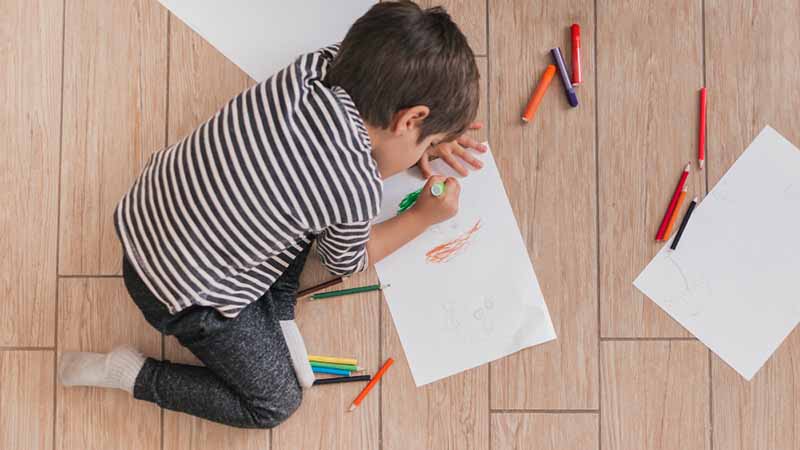How Doodling Helps Kids With ADHD to Focus?
- 23 months ago
Doodling is drawing or sketching aimlessly or without any particular purpose. It has long been considered a distraction or a sign of boredom, but recent studies suggest that doodling can be a helpful tool for children with ADHD.
Are you sick of yelling at your kid to sit still and pay attention? Do you struggle to keep your child engaged in their studies? If so, you are not alone. Many parents and educators struggle with finding ways to help kids with ADHD stay focused and engaged. But what if we told you the solution to this problem might be as simple as letting your child doodle?
Adults and children can both be affected by Attention Deficit Hyperactivity Disorder (ADHD), a neurodevelopmental condition. Symptoms include hyperactivity, impulsivity, and inattention. Children with ADHD may struggle to focus and stay engaged in tasks for long periods, affecting their academic performance and social interactions. One technique that has shown promise in helping kids with ADHD to focus is doodling.
Also check: Know about ADHD in your child?
Why do kids with ADHD doodle?
Kids with ADHD (Attention Deficit Hyperactivity Disorder) often doodle because it can help them focus and regulate their attention. Doodling is a type of fidgeting, and research has shown that fidgeting can help individuals with ADHD stay focused.
When someone with ADHD is asked to sit still and pay attention for extended periods, they can become restless and fidgety. Doodling can serve as a physical outlet for this restlessness and help them stay engaged in what they are supposed to be doing. By doodling, they are engaging in a simple task that doesn't require a lot of attention or effort, which can help keep them from being distracted or bored.
Furthermore, doodling can also serve as a form of self-expression and help kids with ADHD cope with anxiety or stress. It provides a way to channel their thoughts and emotions, which can be especially helpful during heightened emotional arousal.
You may also like: Hyperfocus: The ADHD productivity superpower | Effect on kids and adults
The biology behind the benefits of doodling?
When children with ADHD are asked to sit still and listen to a lecture or complete a task, their brains can easily become overwhelmed and disengage. However, when they are allowed to doodle, their brains can focus better on the task at hand. Doodling helps activate the brain's "default mode network," responsible for daydreaming, creativity, and introspection. When this network is activated, it helps reduce the stress and anxiety that can come with tasks that require focused attention.
Not only does doodling help reduce stress and anxiety, but it can also improve memory retention. When children doodle while listening to a lecture or reading, they are more likely to remember what they learned. It is because doodling helps them engage their visual and auditory senses, which reinforces learning and retention.
Doodling can also be an effective tool for helping children with ADHD regulate their emotions. When children feel anxious or stressed, they can use doodling to express their emotions healthily. Drawing pictures or scribbling can help release pent-up emotions, leading to better emotional regulation and improved overall mental health.
You may also like: Craft ideas for you and your child!
Art therapy for ADHD
Art therapy can be beneficial for individuals with ADHD. Art therapy is a type of therapy that uses art as a medium of communication and self-expression. It allows people to explore their thoughts and emotions in a safe and supportive environment.
Art therapy can be specifically helpful for individuals with ADHD because it provides a structured activity that allows them to focus their energy and attention. It can help individuals with ADHD develop their organizational and planning skills, also their ability to manage impulsiveness.
In art therapy, individuals are encouraged to create artwork that represents their thoughts and feelings. The therapist may provide prompts or themes for the artwork or allow the individual to choose their subject matter. As the individual creates their artwork, the therapist may ask questions or provide feedback to help the individual explore their thoughts and emotions.
Also check: Art therapy techniques and benefits
In a Nutshell
Doodling can be a powerful tool for helping children with ADHD focus better, retain information, and regulate their emotions. Parents and educators can help children improve their learning and mental health by promoting doodling in the classroom and at home. So, the next time your child starts doodling during a lesson, remember that they're not just wasting time - they're engaging their brain and enhancing their learning!








